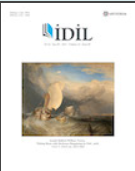HOCA AHMED YESEVİ TÜRBESİ KAPI TOKMAKLARINDA ASLAN FİGÜRLERİ VE İKONOGRAFİSİ
LION FIGURES AND ICONOGRAPHY ON THE DOOR KNOCKERS OF HOCA AHMED YESEVI TOMB
Author(s): Alev Çakmakoğlu KuruSubject(s): Cultural history, Visual Arts, Islam studies, History of Art
Published by: Sanat ve Dil Araştırmaları Enstitüsü
Keywords: Ahmed Yesevi; tomb; lion figure; iconography; door knockers;
Summary/Abstract: By blending old Turkish beliefs with Islam, Hodja Ahmet Yesevi ensured the formation of an understanding of Sufism based on Turkish wisdom, love of Allah, tolerance and human love. The first Turkish mystic, Hoca Ahmet Yesevi, was buried in the city of Yesi after his death, and his small tomb, which was built in the 12th century, was rebuilt at the request of Emir Timur with the understanding of a kulliye including Yesevi's tomb. It is known that its structure was an important place of visit in almost every period. In addition to the life and works of Hodja Ahmet Yesevi, this visit, which embraces his tomb, which is the heart of Turkestan Geography, has attracted the attention of scientists, and the Mausoleum of Hoca Ahmed Yesevi was also examined in terms of its architecture and decorations, and it was evaluated in terms of the place and importance of this building in Turkish Art. At this point, the element that draws our attention is the lion figures on the bronze knockers of the wooden door opening to the Room with Copper Cauldron in Hoca Ahmed Yesevi Complex. On both wings of the door, the “şemse”shaped door handles decorated with rumi spiral branches and palmettes with openwork technique are attached to the floor with a lion head figure. There are more small lion heads on both sides of these lion figures, clinging to the şemse. Considering that the tomb of Hodja Ahmed Yesevi is located and that they belong to this complex where the memory of the saint was lived and where he was kept alive, it should be thought that the lion figures here were not used for decoration purposes only, or that the lion figures were not only for protection from evil and enemies. In the article, the use of lion figures in Turkish art before and after the adoption of Islam and their symbolic meanings is emphasized and the lion figures on the door knockers are evaluated in the light of the legends about him, especially in the wisdom of Hodja Ahmed Yesevi and it is tried to come to a conclusion. Despite the inability of such a bond materially, the descendants of Hodja Ahmed Yesevi to Hz. Ali's attachment to Hz. Ali is seen as the "Lion of Huda", and the three numbers that the Turks include in Islamic Sufism and Sufism are primarily Allah, Hz. Muhammad and the Hz. Ali, and the fact that these three lion figures are on the door make these lion figures away from being an ordinary decoration element.
Journal: İdil Sanat ve Dil Dergisi
- Issue Year: 10/2021
- Issue No: 85
- Page Range: 1303-1317
- Page Count: 15
- Language: Turkish

